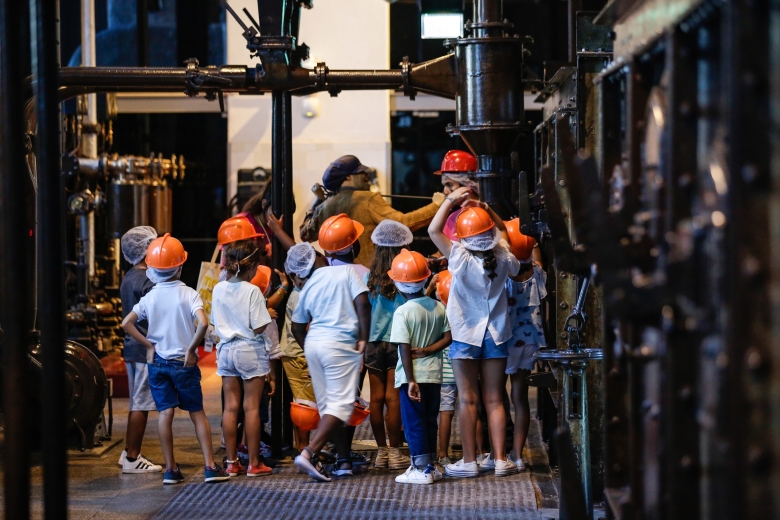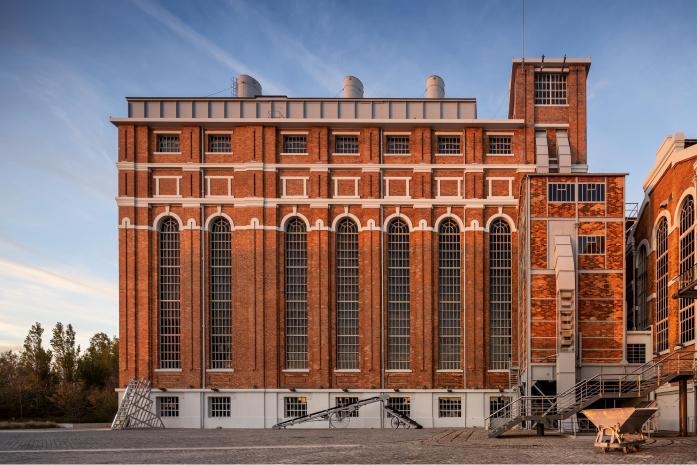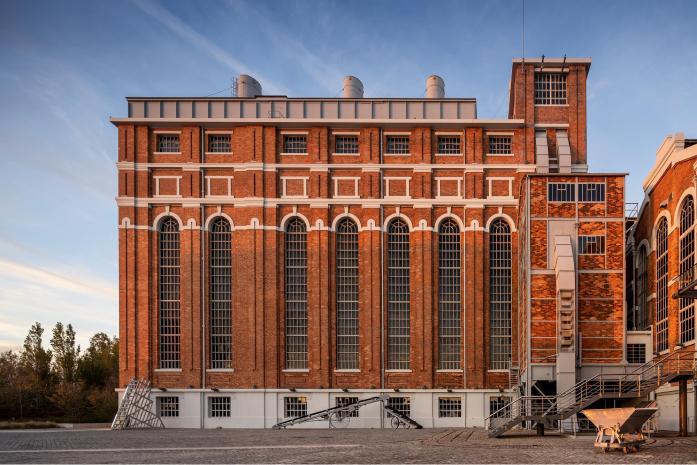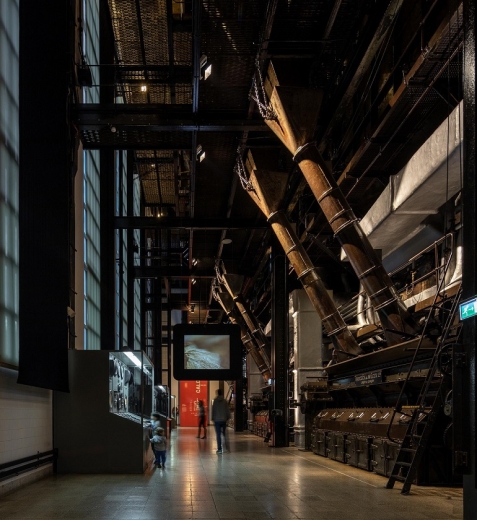
The Tejo Power Station was a thermoelectric power plant owned by the Companhias Reunidas de Gás e Electricidade (CRGE – United Gas and Electric Companies) that supplied power to the entire Lisbon region. Built in 1908, its production activity took place between 1909 and 1972 although, as of 1951, it was used as a reserve power plant, producing only to complement the energy supply of the hydroelectric plants.
In 1975 it was shut down and removed from the production system. Over time, the plant underwent several modifications and expansions, going through continuous stages of construction and alteration of its production systems. In a new phase in its history, the Tejo Power Station opened to the public for the first time in 1990, then as the Electricity Museum. After an additional period of restoration works on its buildings and equipment, it reopened permanently in 2006.
The permanent exhibition, named The Electricity Factory, presents original machinery in a perfect state of conservation, telling the story of this old plant, as well as the evolution of electricity up to renewable energies. A science space with an industrial basis, this is one of the most visited museums in the country, especially by school audiences. This circuit includes an exhibition space entitled The History of Energy, opening in 2023. Here, visitors are invited to travel through the history of energy, from the past to our collective future, and with a focus on the challenges of the energy transition and sustainability. Visitors are challenged to be active agents for change by adapting behaviour to new global climate patterns.
The Electricity Factory is located in a building that is a unique example of industrial architecture dating from the first half of the 20th century in Portugal. The building, classified in 1986 as a Property of Public Interest, presents an impressive iron structure covered with brick, and its facades portray different artistic styles, from art nouveau to classicism.


